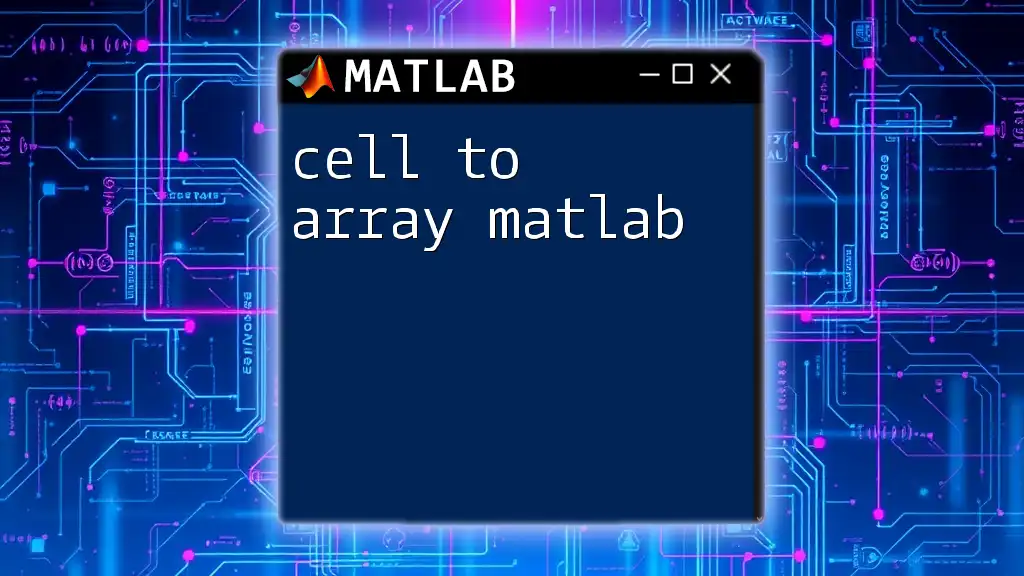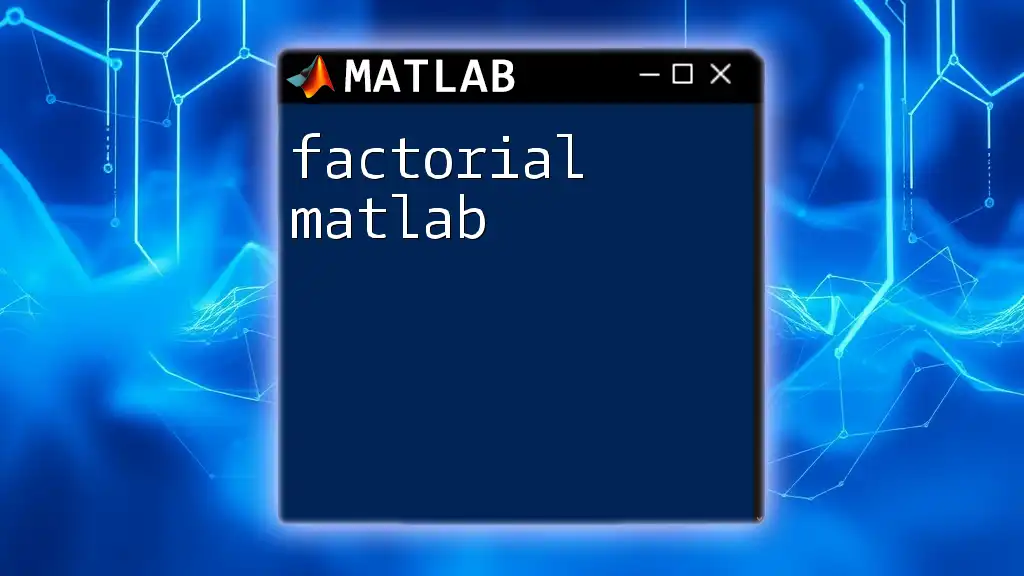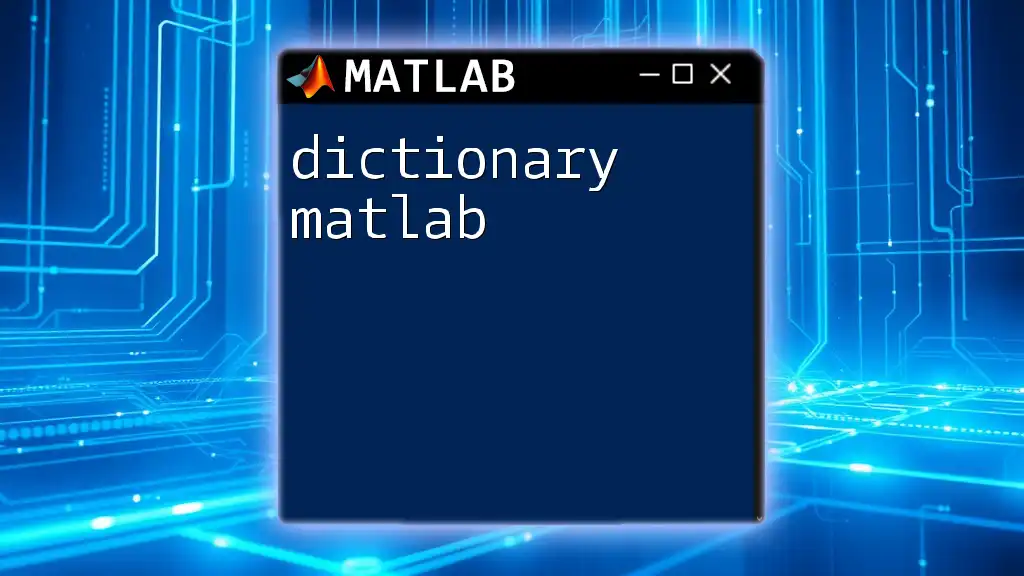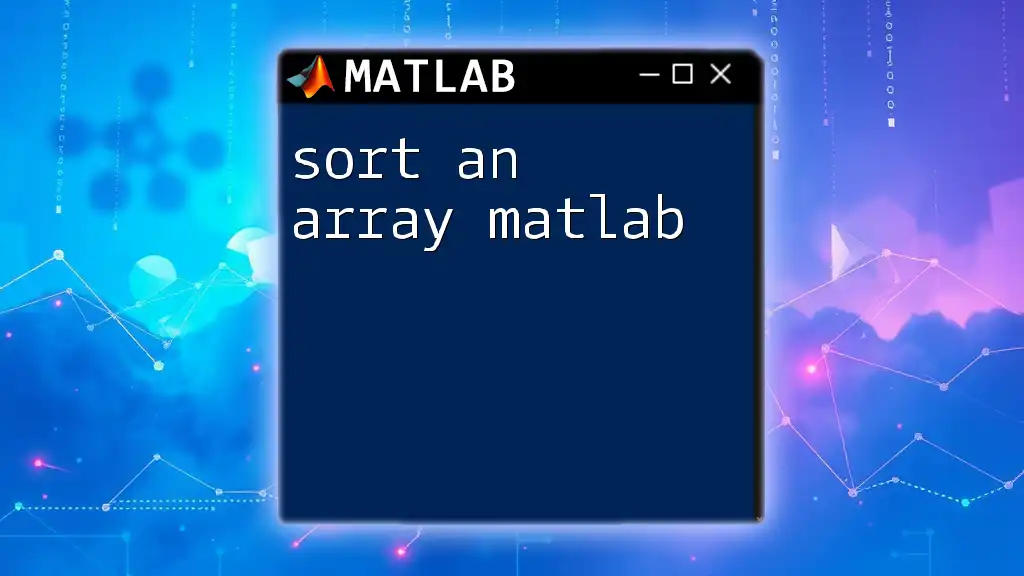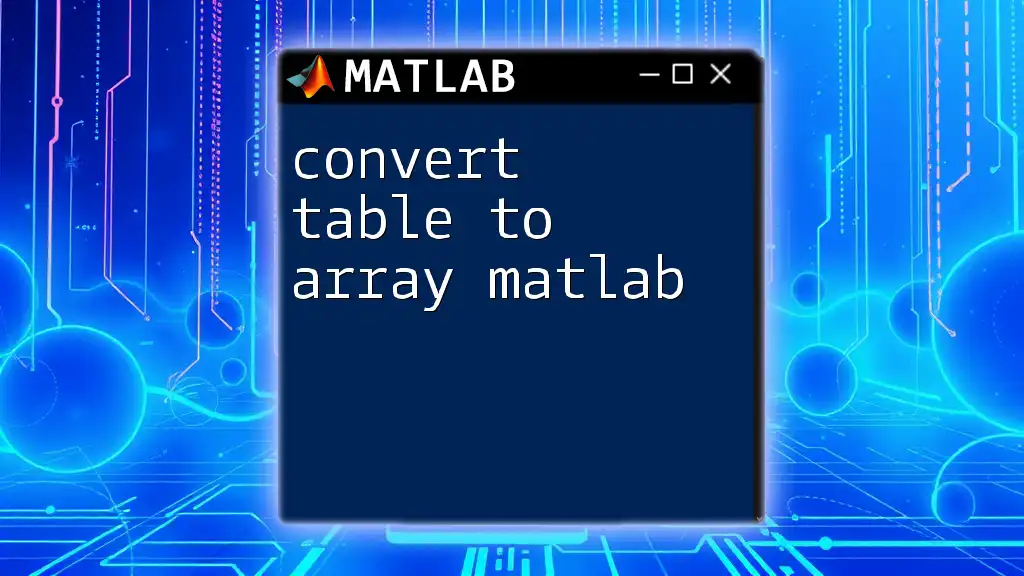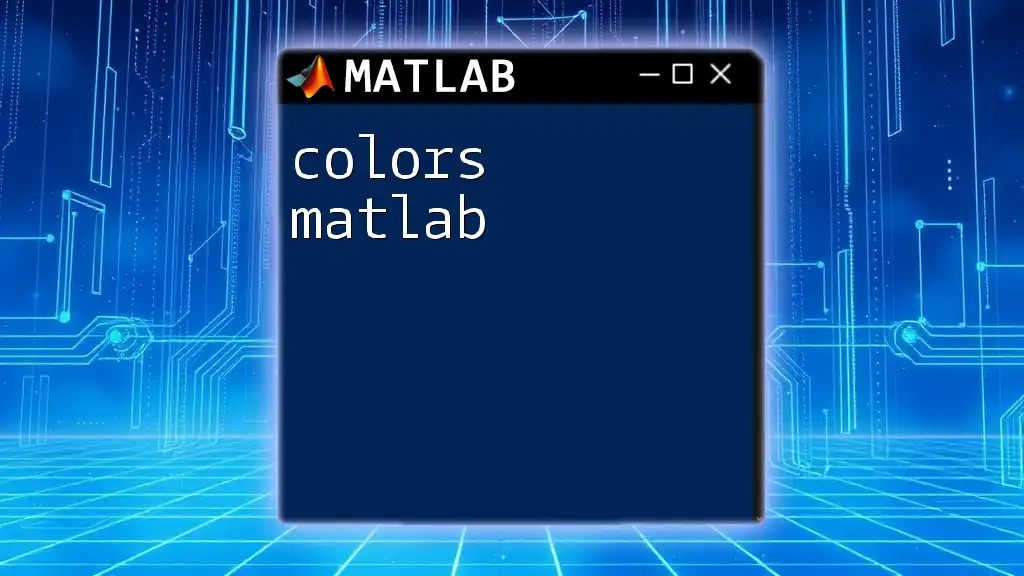In MATLAB, you can convert a cell array to a regular array using the `cell2mat` function, which concatenates the contents of the cell array into a numeric array if the contents are compatible.
% Example of converting a cell array to an array
C = {1, 2; 3, 4}; % Define a cell array
A = cell2mat(C); % Convert cell array to a regular array
Understanding Cell Arrays in MATLAB
What is a Cell Array?
Cell arrays are a unique data structure in MATLAB that allows the storage of arrays of varying types and sizes. Unlike standard numeric arrays, which can only hold data of the same type, cell arrays can contain any type of data, including strings, numbers, or even other arrays. This flexibility makes cell arrays particularly useful when you need to store heterogeneous data.
Creating Cell Arrays
Creating a cell array in MATLAB is straightforward. The syntax uses curly braces `{}` to define elements. For example, consider the following command that generates a simple cell array:
myCellArray = {1, 'text', [2, 3]};
In this example, `myCellArray` contains three elements: the number `1`, a string `'text'`, and another array `[2, 3]`. Each element can be accessed and manipulated independently, showcasing the versatility of cell arrays in handling complex datasets.
Accessing Elements in Cell Arrays
Accessing elements within cell arrays requires specific indexing syntax. To retrieve an element from a cell array, you must use curly braces for the desired element index. For instance:
element = myCellArray{2}; % Accessing the second element
In this case, `element` will now hold the string `'text'`. It is crucial to differentiate between using curly braces `{}` and parentheses `()`, as the former retrieves the contents of the cell, while the latter returns the cell itself.

Why Convert Cell Arrays to Regular Arrays?
Benefits of Conversion
Converting cell arrays to regular arrays brings significant advantages, especially in terms of performance and simplicity. Regular arrays are optimized for numerical computations, thus providing faster execution times for operations involving large datasets.
Furthermore, operations such as matrix manipulations and mathematical computations become simpler and more intuitive with regular arrays. Regular arrays also facilitate better compatibility with built-in MATLAB functions that are explicitly designed for use with numeric matrices.
Situations Requiring Conversion
Several scenarios highlight the need for conversion from cell arrays to regular arrays. For instance, when performing calculations on numerical data stored in a cell array, conversion allows for direct application of mathematical functions that expect numeric input.
Imagine you have a cell array of numbers but need to compute the mean. By converting the cell array to a regular array first, you can execute the mean function directly:
meanValue = mean(cell2mat(myCellArray));
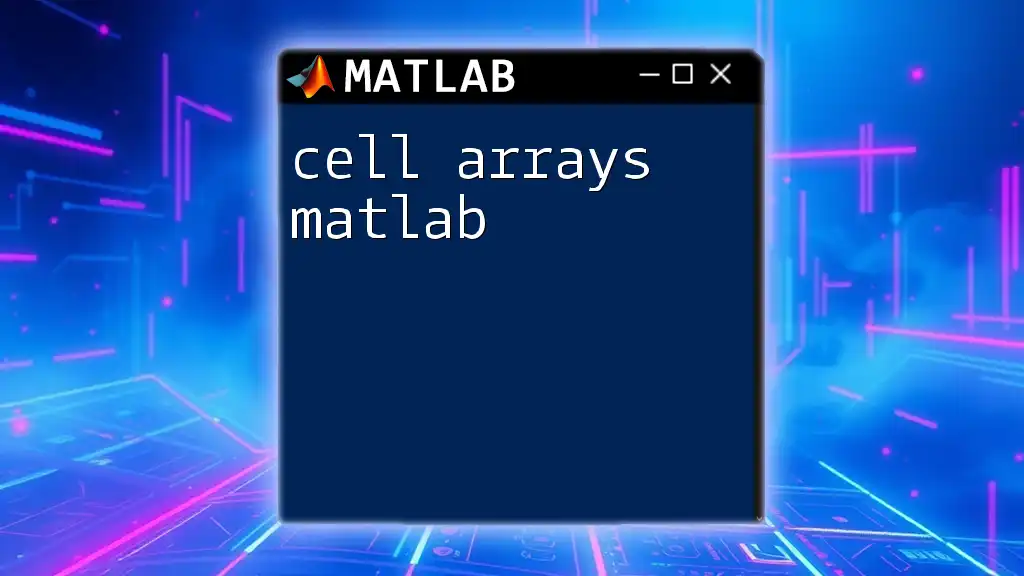
Techniques for Converting Cell Arrays to Regular Arrays
Converting to Numeric Arrays
One of the most common methods of converting cell arrays is using the built-in `cell2mat` function. This powerful function is designed to convert a cell array with only numeric values into a regular numeric array. Here's an example:
numCellArray = {1, 2, 3; 4, 5, 6};
regularArray = cell2mat(numCellArray);
In this case, `regularArray` will contain a 2x3 numeric array:
1 2 3
4 5 6
However, it is essential to ensure that all elements in the cell array are of the same size and type; otherwise, MATLAB will return an error indicating size mismatches.
Converting to Character Arrays
When dealing with cell arrays that store strings, you may need to convert these strings into a single character array. The `strcat` function can be particularly useful here. For example:
stringCellArray = {'Hello', 'World'};
combinedString = strcat(stringCellArray{1}, ' ', stringCellArray{2});
In this example, `combinedString` will contain the result `'Hello World'`, demonstrating how to easily combine strings.
Handling Mixed Data Types
When you encounter cell arrays containing mixed data types, conversion can be more complex. One effective method is to use the `cellfun` function, which applies a specified function to each cell, allowing for uniform conversions based on the data type. For instance:
mixedCellArray = {1, 'text', 3.14};
numericArray = cellfun(@(x) str2double(x), mixedCellArray, 'UniformOutput', false);
In this code snippet, `cellfun` applies the `str2double` function to each element of `mixedCellArray`. Importantly, it returns an array of numeric values while gracefully handling non-numeric types by outputting `NaN`.

Error Handling and Best Practices
Common Errors and Solutions
When converting cell arrays to regular arrays, users often encounter errors, particularly those related to size mismatches. To avoid these situations, it is beneficial to ensure all cells contain elements of compatible sizes. Using the `try-catch` construct can also help manage errors gracefully.
Best Practices
To facilitate smooth conversion, always structure your cell arrays with similar data types when you anticipate the need for conversion. For instance, if your cell array is primarily meant for numerical calculations, store only numeric or uniformly sized nested arrays.
Additionally, consider preallocating space for large arrays to optimize performance, especially if you plan to fill the array through loops or iterative operations.

Real-World Applications of Cell to Array Conversion
Case Studies
Conversion from cell arrays to regular arrays resonates strongly in data analysis and engineering fields. For example, in data preprocessing for machine learning tasks, converting datasets from a heterogeneous format into a regular, homogeneous structure is crucial for effective model training.
Tips for Efficient Coding
Developing efficient MATLAB code relies on understanding the differences between data structures. By favoring vectorization—applying functions to entire arrays instead of loops—users can dramatically reduce computation time. This approach not only enhances performance but also minimizes coding errors.

Conclusion
In summary, understanding how to convert cell arrays to regular arrays in MATLAB is an essential skill for both novice and experienced users. By mastering techniques such as the `cell2mat` function, string concatenation, and handling mixed data types with `cellfun`, users can significantly enhance their MATLAB programming abilities. Embracing these concepts will streamline data processing and ensure efficient coding practices.
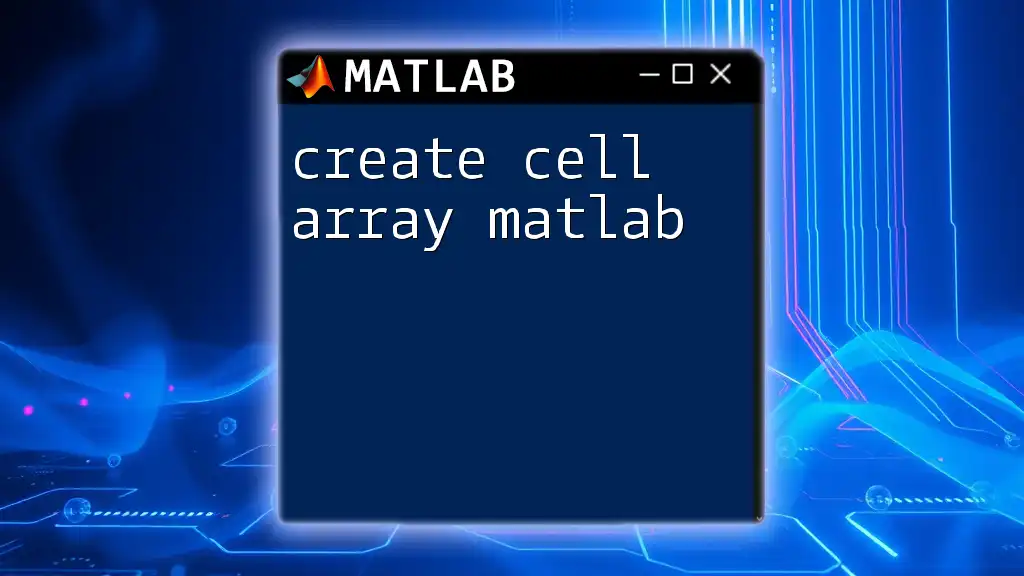
References
For further reading, consider utilizing MATLAB’s official documentation, engaging in online forums, and exploring books or online courses that dive deeper into MATLAB programming.

FAQs
If you're new to converting cell arrays in MATLAB or still have questions, don't hesitate to explore the specific sections of this guide for more in-depth answers to common queries related to this topic!

